Top dressing of potatoes with potassium monophosphate, fertilization features and application rules
Gardeners dream of getting a decent harvest in limited areas; for potatoes, it is required to allocate ridges with fertile moisture-permeable soil. The culture quickly depletes the soil. The result - the bushes give out 5-6 tubers weighing up to 100 g.
Efforts are wasted. For planting next year, the land requires structuring. Mineral complexes should be added.
Monopotassium phosphate will help solve the problem of growing potatoes in small summer cottages. This drug actively increases the resistance of potatoes to diseases, strengthens the bushes.
What it is
Potatoes are responsive to different mineral fertilizers... The choice of gardeners is determined by ease of use and price.
Description of potassium monophosphate:
- the substance has the formula КН₂РО₄;
- the purified compound is crystalline, colorless;
- industry produces powder or granules of light brown or beige color;
- dissolves in soft water (22.6% of the mass at T = 20⁰C, 83.5% at T = 90⁰C);
- active ions: Р⁺ (23%), К⁻ (28%);
- in concentration it lags behind potassium preparations (sulfate, chloride) and phosphoric (superphosphates).
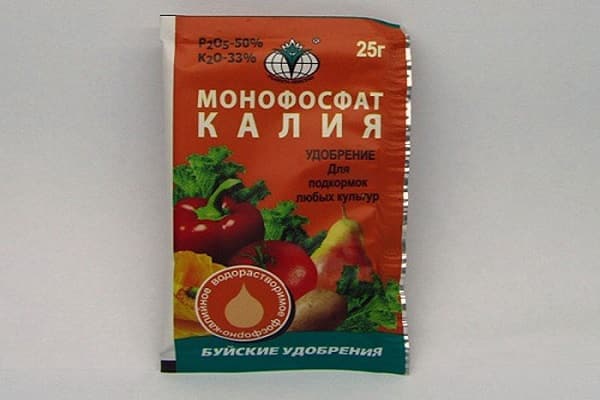
Additional names: monopotassium salt of orthophosphoric acid (dihydrogen orthophosphate). The solubility of a powdery substance depends on the softness of the liquid. It is not recommended to dilute with artesian or tap water (sintering occurs). Gardeners should consider: granules disperse in water of any hardness.
Sulfur or iron inclusions change the color of the salt to yellowish. This speaks of a manufacturing defect. You should not buy the drug.
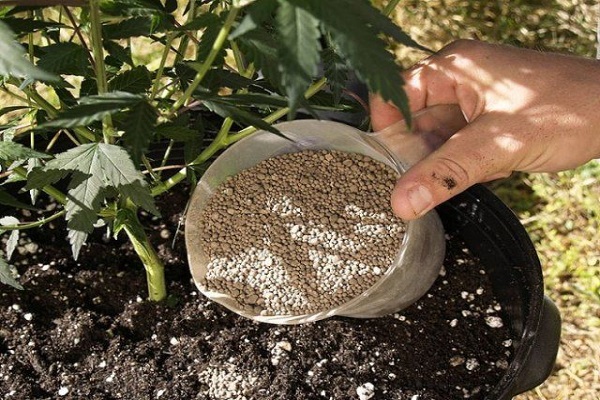
The value of potassium monophosphate is its fast solubility and quick assimilation of useful elements. These properties determine the rules of application when growing potatoes.
Potassium salt benefits
The use of potassium monophosphate in country gardens is determined by positive aspects:
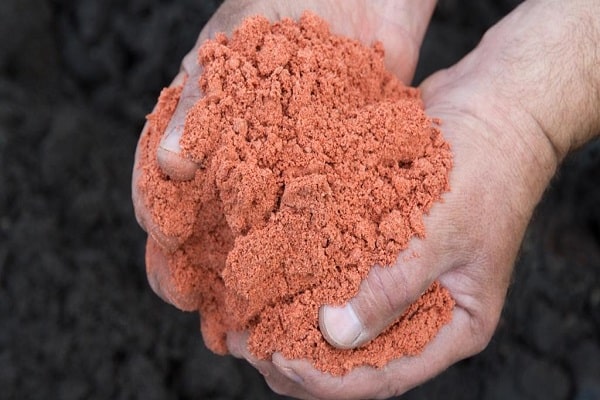
- The amount of active ions Р⁺, К⁻ is optimal for growing green mass with potatoes. Healthy, strong tops enable the plant to form large tubers.
- Bushes respond to fertilization by growing side shoots. The stems thicken, the plants do not lie on the ridges.
- The active ingredients are easily absorbed by all parts of the potato (shoots, tubers).
- Does not accumulate in soil, plants. Competent planting processing allows you to get dense, tasty tubers. Their keeping quality will increase.
- The complex is compatible with all known pesticides. It is allowed to prepare a single solution for processing the tops.
- Nitrogen enhances the action of potassium monophosphate. But it is required to maintain an interval: first add N, and after 2–5 days, fertilize it.
- КН₂РО₄ does not change the acidity of the soil. Reasonable application will eliminate negative aspects.
- Additional bonus: prevention of powdery mildew and potato fungal diseases.
- The tops do not store sugar. The skin hardens. The result is that the plant becomes useless for aphids.
- The soil microflora does not suffer from the use of potassium monophosphate. Bacteria and microorganisms continue to work actively.
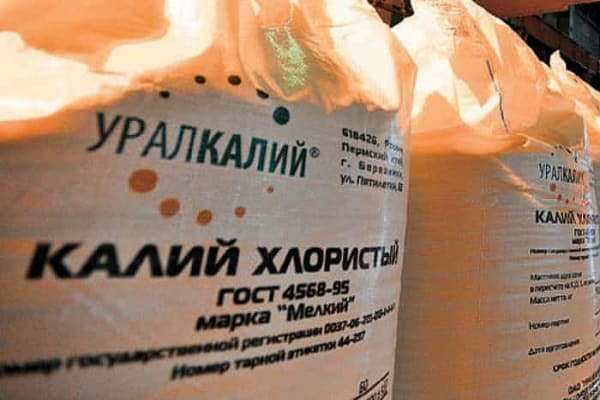
Monopotassium salt introduced into the soil retains moisture. This must be taken into account when planning planting irrigation.
What should a gardener prepare for?
Twice foliar feeding of potatoes allows you to get a good harvest in a small area. But the gardener must also assess the disadvantages of the drug:
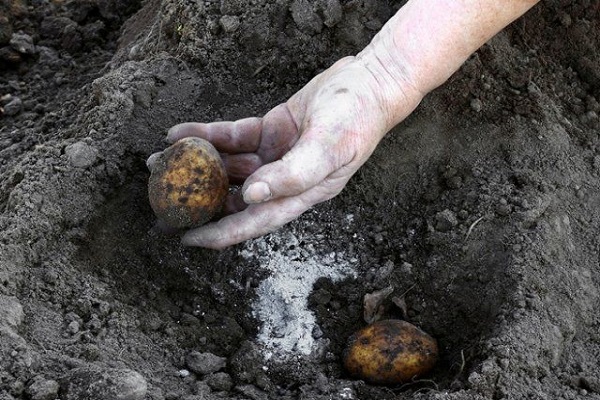
- The maximum effect is achieved when the complex is introduced in a dissolved form. Summer residents are accustomed to incorporating dry matter into the soil.
- In the autumn preparation of the ridges for potatoes, potassium monophosphate is applied only when planting green manure.
- The dry matter laid in the soil has a fruitful effect on potatoes in moderately warm and humid summers.
- The weeds appreciated the complex. The ridges need to be weeded constantly. For working summer residents, this is an undesirable load.
- The complex easily absorbs moisture. The beneficial properties of a wet preparation disappear.
- The solution for spraying in the light loses its strength. The finished product must be applied within 2-3 hours.
- Potassium monophosphate is not compatible with calcium and magnesium. Potatoes stop assimilating these elements. This feature should be taken into account when growing potatoes on soils with a low content of Ca and Mg.
Potassium monophosphate is effective at the first signs of K deficiency (brown, wrinkled, bent potato leaves). This is ensured by the instant assimilation of the K⁻ ion.

How to apply correctly?
Gardeners prepare planting areas for potatoes in advance. In the autumn, they dig up, add mineral and organic substances. It is pointless to scatter monopotassium salt embedded in the soil: weeds will assimilate the ions. The potatoes won't get anything.
The use of fertilizer in the fall is justified when planting green manure in the future field. The ridges need to be dug up, scattered with KN₂RO₄, closed with a rake. Small seeds are scattered without embedding in the ground. In this case, the landing must be covered with light lutrasil, pressed along the perimeter (protected from birds). Large - scattered simultaneously with fertilizer.

Good results are obtained by introducing potassium monophosphate during spring planting of potatoes. Tubers should be laid out according to the scheme in grooves, sprinkled with soil with fertilizer on top. Then water abundantly. This will provide a chelated (easily assimilated) form of the complex.
The gardeners are trying feed potatoes simultaneously with hilling. The ridges must first be cleared of weeds. Monophosphate is distributed along the plantings of the bushes. Then the soil is poured. Disadvantage of the method: the complex must be dissolved in water. When watering, the liquid flows from the rollers of the earth. The assimilation of active ions is incomplete.

An effective way to feed potatoes with potassium salt is to sprinkle the tops... The granular preparation must be dissolved in water (8-15 g per 10 l). Wear gloves, goggles and a respirator. Spray in the morning before 9 o'clock or in the evening after 16. Carry out the first feeding after hilling, the second - during the formation of buds.
Potassium monophosphate has more advantages than disadvantages. This ensures its use to obtain a good harvest of potatoes in summer cottages.
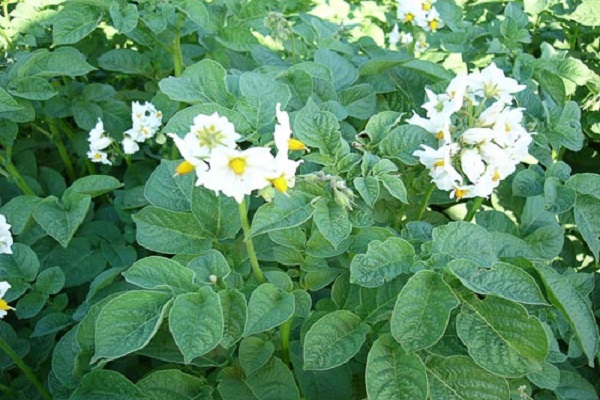
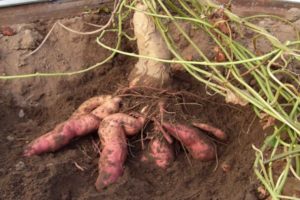
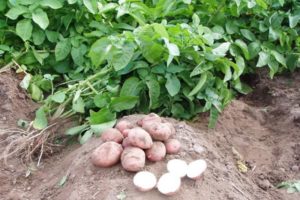



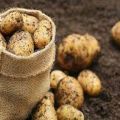

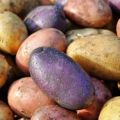
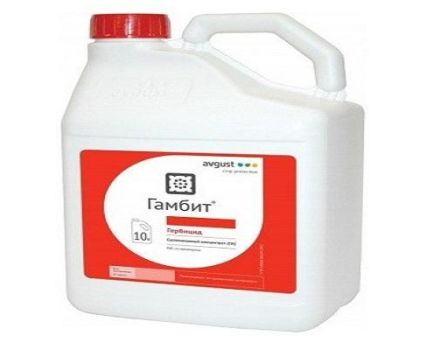
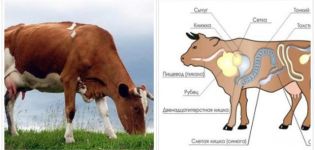
Potatoes in my dacha take only a hundred square meters, but this one with monophosphate feeding and using a growth activator BioGrow a harvest is obtained that is enough for almost the entire winter. By the way, it is stored well, without signs of decay.